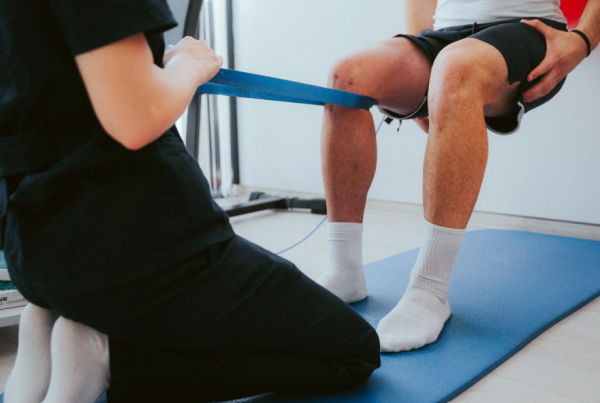Last month we checked in with our first few Bounce graduates to hear their thoughts on the Bounce program, our new 12-week, fixed fee, fatigue management program. But, being the scientists that we are, we also know the value of having objective data to back up the claims!
Today, we are delving into some of the numbers that we look at as our metrics of success during the Bounce fatigue management program, and what they actually mean in a real-world sense. We’ll also include some of the numbers from our very first Bounce participant! Come and take a look behind the scenes.
An Introduction to HRV
Heart rate variability is a measure of the variation in the time interval between successive heartbeats.
As counter-intuitive as this may seem, a good heart rate variability score actually occurs when there is more variability. This is because it represents the heart being responsive to influence from both the sympathetic and parasympathetic nervous systems, which speed up and slow down the heart rate respectively, allowing our body to adapt and respond to stress.
A responsive nervous system reflects a system that is flexible and adaptable to the environment around it, meaning that it is both able to face up to any stressors (i.e. increased sympathetic drive), and recover effectively once the stressor is removed (increased parasympathetic drive). Being stuck on either side is not ideal, hence a high variability indicates that the body is able to move between two sides effectively. Increases in HRV are always the goal within our fatigue management programs.
HRV in Practise
During the Bounce program, we request that our clients take their HRV measure first thing in the morning to avoid being influenced by external variables during the day.
Because HRV is such a sensitive measure and strongly influenced by contextual and environmental factors (ranging from mood and motivation, sleep quality and quantity, diet, exercise, stress levels, and many more!), we like to collect at least 7 days worth of data to establish the ‘baseline’ HRV number (an average across 7 days) for each individual.
At the end of the program, this baseline value is what we compare to the average of the final 10 HRV data points, to represent their overall improvement in HRV score.
As an example from one of our Bounce clients… We saw an improvement in the average HRV score from week 4 of 41, to 54 in week 12!
It’s also important to note that, while a higher HRV score is better, there is a huge amount of variation in HRV scores from one person to another. This is the reason that we always look for changes from that individual’s baseline HRV score, rather than comparing between individuals.
But wait – there’s more!

We can also compare the range of HRV scores day-to-day (i.e. the highest HRV score minus the lowest HRV score).
A common pattern that we see with our chronic fatigue clients is booming and busting. This is when, on a ‘good’ day, they have higher activity levels (‘making the most of feeling good’, i.e. doing all the housework in one day), which then results in a crash – where they are forced to rest and recover from all that extra activity!
This is something that can be identified within HRV data by looking out for big swings between high and low values. A higher range in scores reflects more booming and busting patterns, where a lower range reflects a stabilising of HRV scores, I.e a reduction in “swings.” We like to see consistency in HRV scores day to day because it also tends to reflect a stabilising of their felt fatigue levels!
For our Bounce client above, her HRV scores stabilised from a range of 23 (week 4), to a range of just 9 (week 12)!
Activity (and Other) Data
This HRV data is collated with other important information, such as step count, activity or exercise completed, and sleep metrics. This helps to provide greater context to the numbers, and provide education so that individuals are able to learn how to self-manage their fatigue symptoms.
Our real-world case study example went from an average of 6,327 steps per day, to over 10,000 steps per day while still improving HRV scores and range.
It’s awesome when we can see these HRV scores remaining stable even with increases in activity levels, because it proves to us that they are developing greater resilience to physical activity.
And then, of course, we have the standard questionnaires that are included within all of our Exercise Physiology programs – the PSFS (Patient Specific Functional Scale), the SF36 (an assessment of self-reported wellbeing) and for our fatigue clients, the MFIS (Modified Fatigue Impact Scale). It’s always good being able to compare our objective numbers with our clients’ reported experience.
Well, there you have it – a sneak preview behind the scenes of the Bounce program! Want to hear what our latest Bounce graduates thought of the program? Check out our previous blog article here!
Author: Yolanda van Vugt Clinical Exercise Physiologist and Content Creator at Specialised Health
Let’s connect, find us:
Have you got a claimant that would benefit from E.P. support? Refer to the team!
#bounce #exercisephysiology #exerciserehab #rehabilitation #lifeinsurance #incomeprotection #ctp #workcover #mobile #mobileexercisephysiology #returntowork #fatigue #fatiguemanagement #mentalhealth #cancer #musculoskeletal #pain #physio #physiotherapy #Sydney #Brisbane #Melbourne #Adelaide #Auckland #Waikato #BayofPlenty #Wellington #Otago #Christchurch



